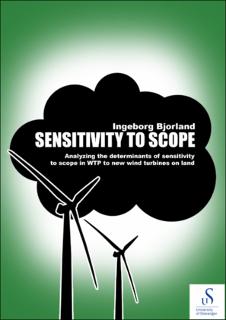| dc.description.abstract | Although the topic of sensitivity to scope has grown considerably over the past 40 years, it is still a widespread debate about its validity towards stated preference methods (SP). This paper undertakes a quantitative examination of the phenomenon of sensitivity to scope through discrete choice experiment (DCE) method and hopefully provide a useful input into the debate of its validity. The purpose is to investigate the determinants of sensitivity to scope towards wind power by examining the citizens of Norway at the individual-level. This implies that attitudes and human behavior is taken account for, as most studies in the literature has ignored. Two separate estimates from the welfare measure of willingness to pay (WTP) is also used for comparisons, hence WTP preference and WTP space, to detect (if any) differences in the determinants.
The secondary data used were originally collected in April 2019, with a total of 821 respondents. The results indicate that individuals living in the county of Rogaland have slightly larger significant results than the opposing county of Oslo. Determinants that impact the overall scope sensitivities are socioeconomic variables such as age, gender, income, member of environmental organizations and use-values. However, there is no consistency over the different level of wind turbines and resulting in different determinants for each level examined. Additionally, the conventional willingness to pay preference respond better with the regression models. The results reveal low significance in all models conducted and this paper cannot confirm the concept of “more is better” for the environmental good. This is possibly due to the low acceptance rate of the survey, as well as many extreme values of scope arc elasticities that had to be removed. Moreover, positive and negative scope elasticities were run in separate models. It will therefore be necessary to conduct a similar study with a larger sample size for better representatives of the data and indication of the determinants. | |
